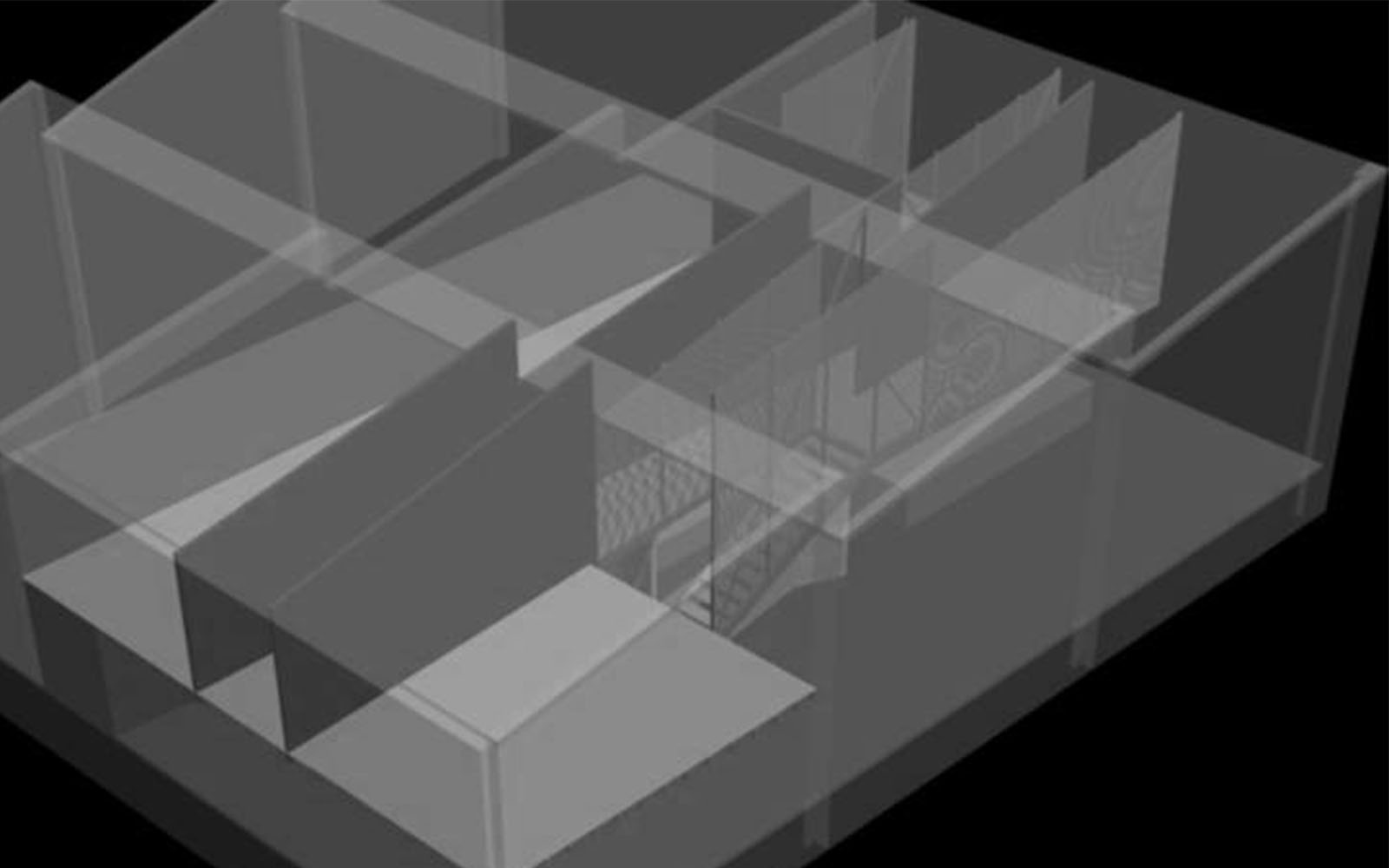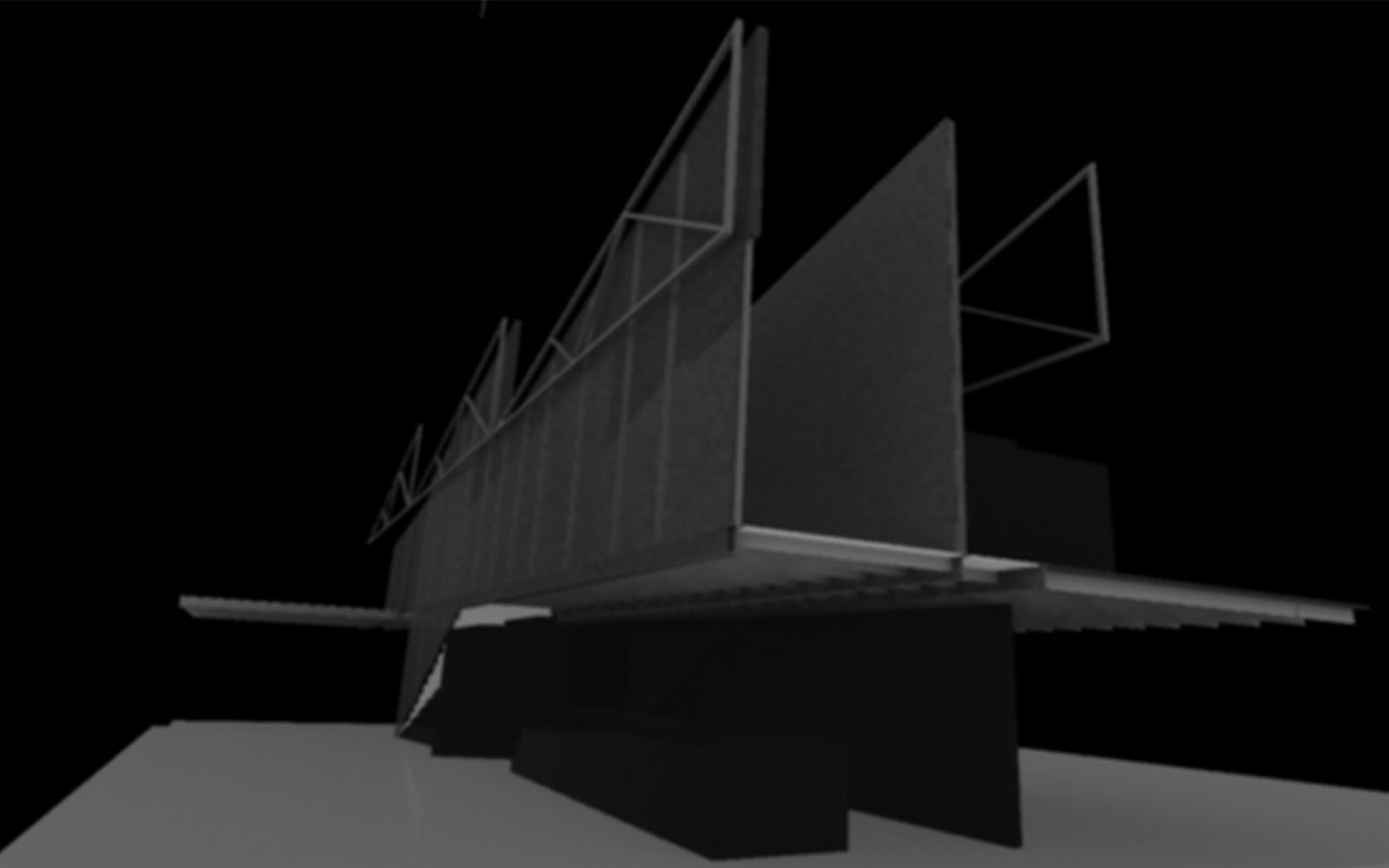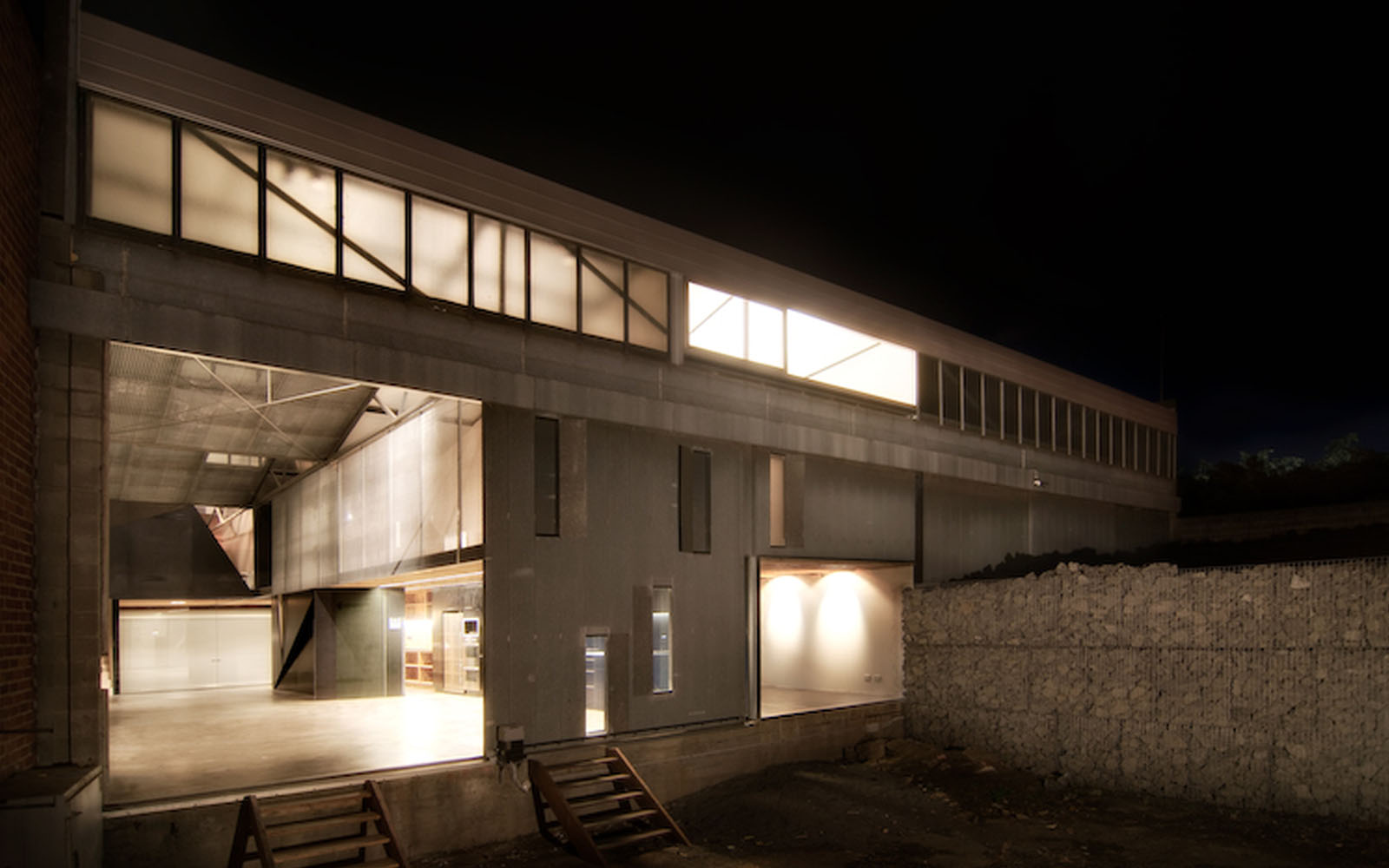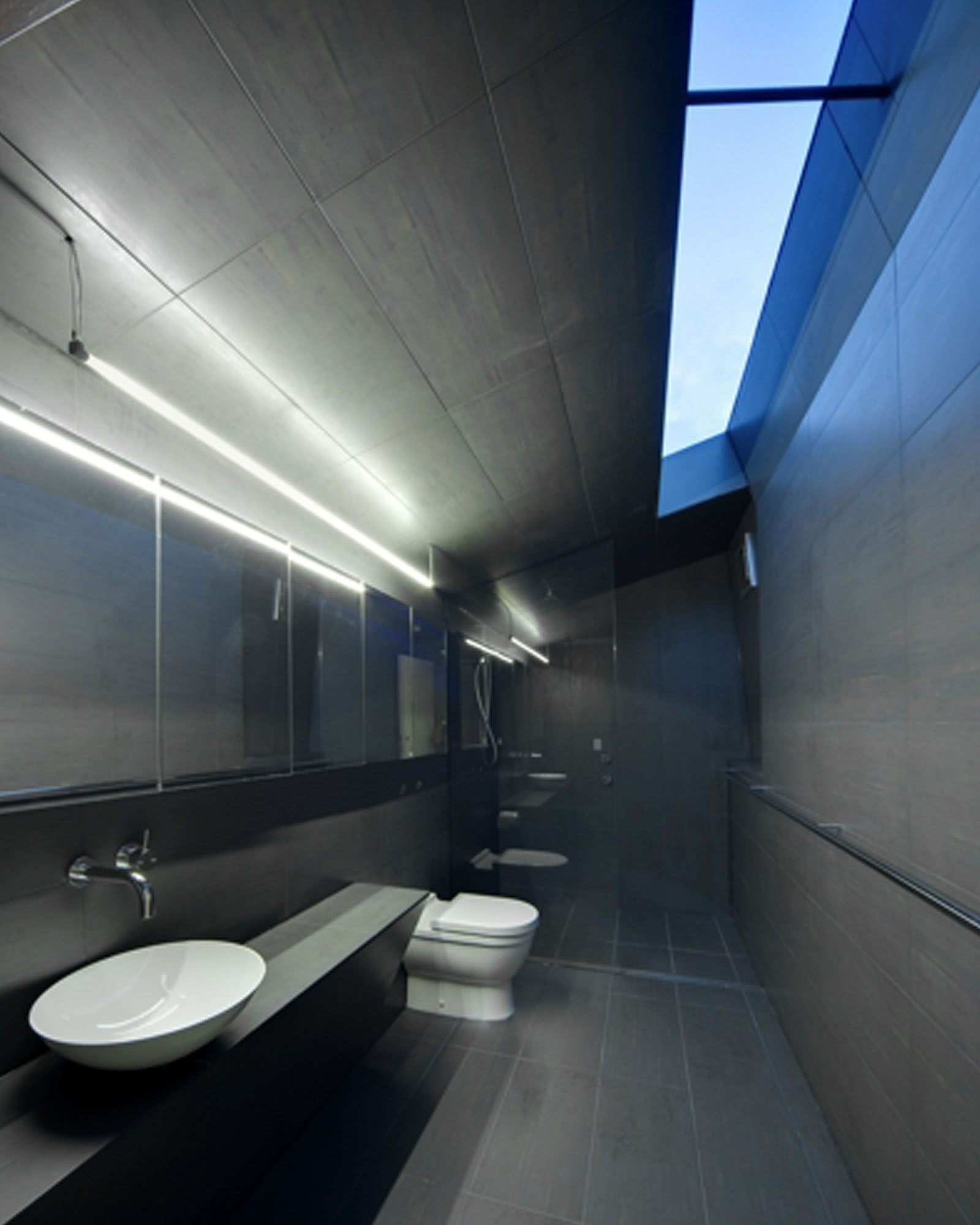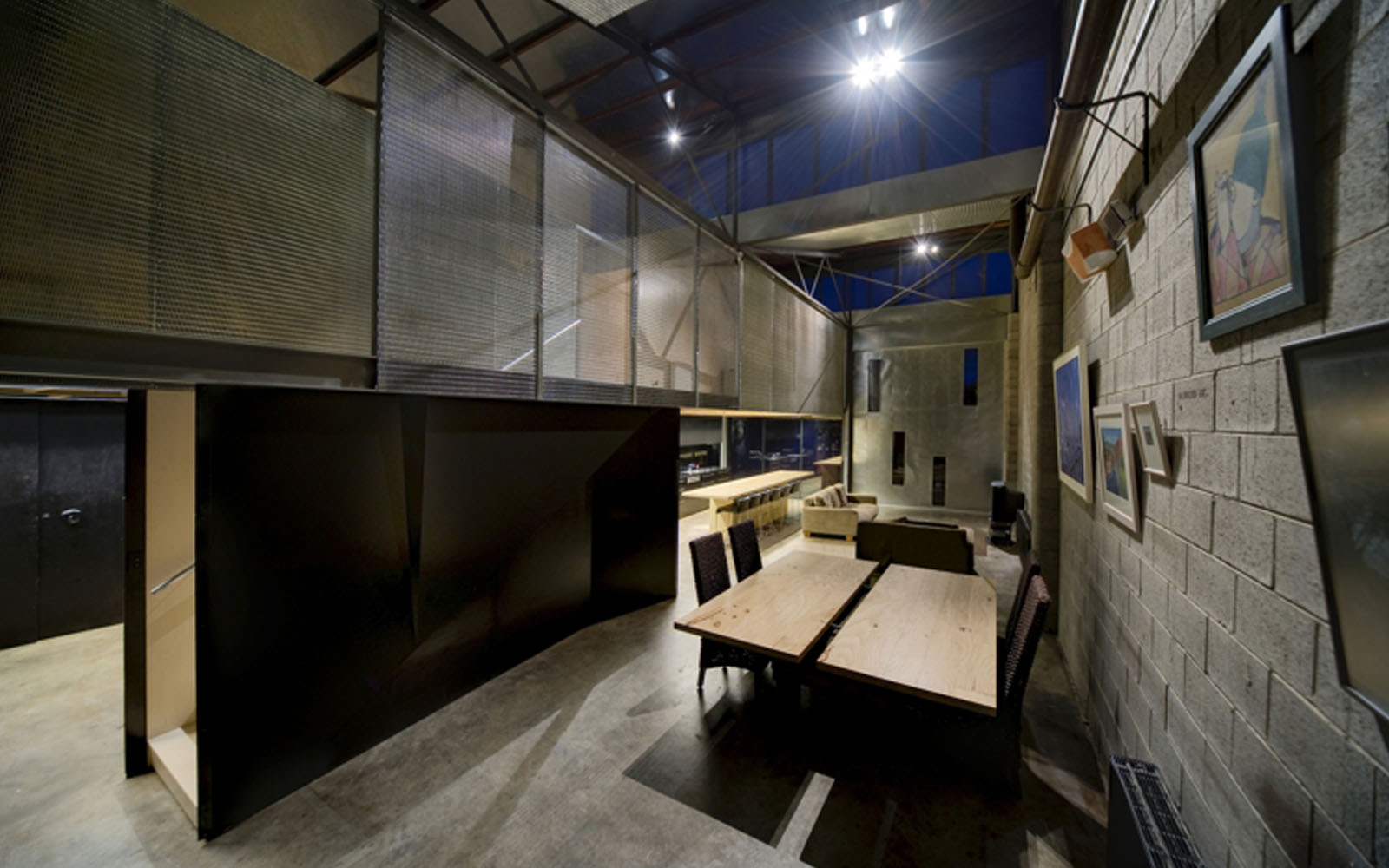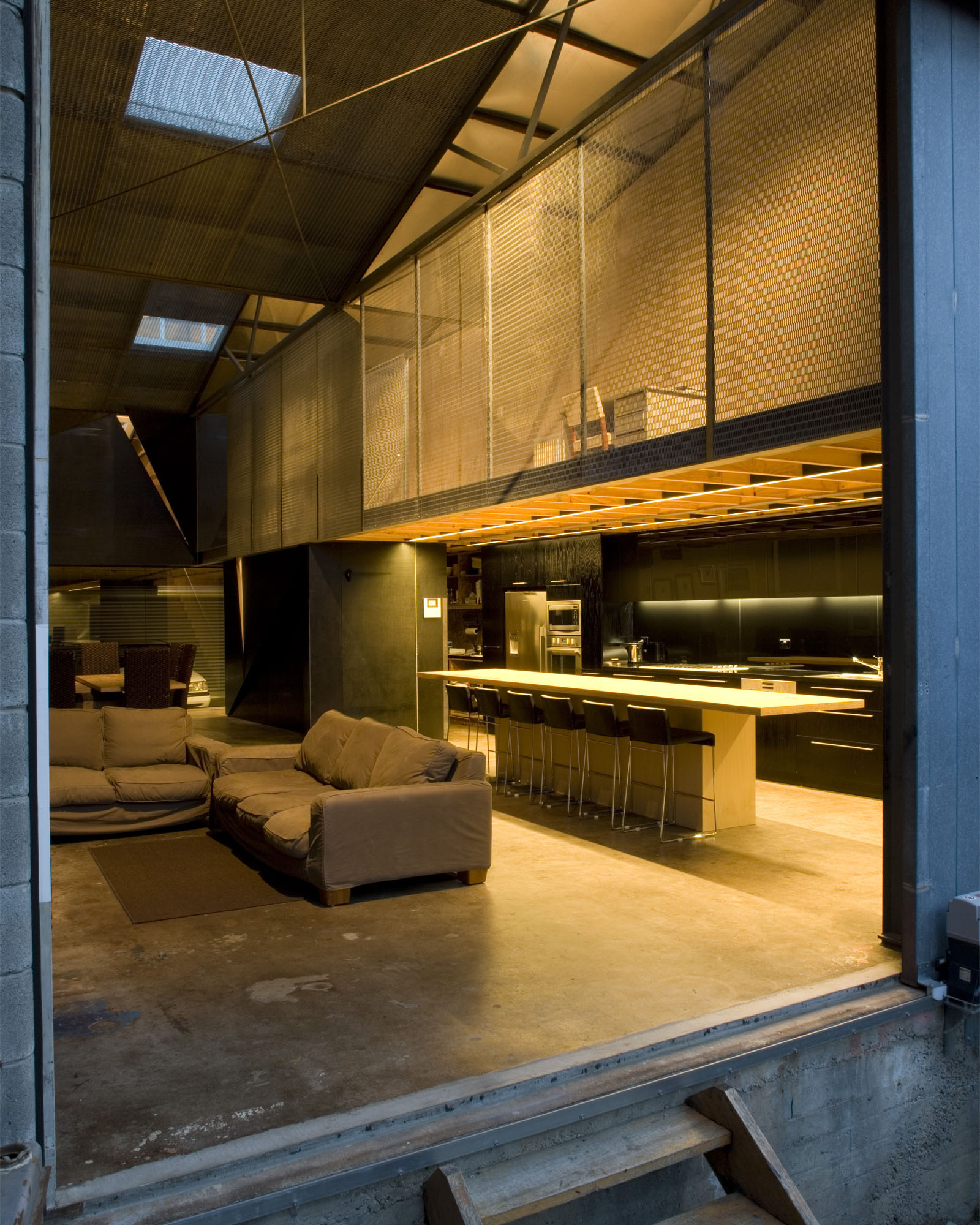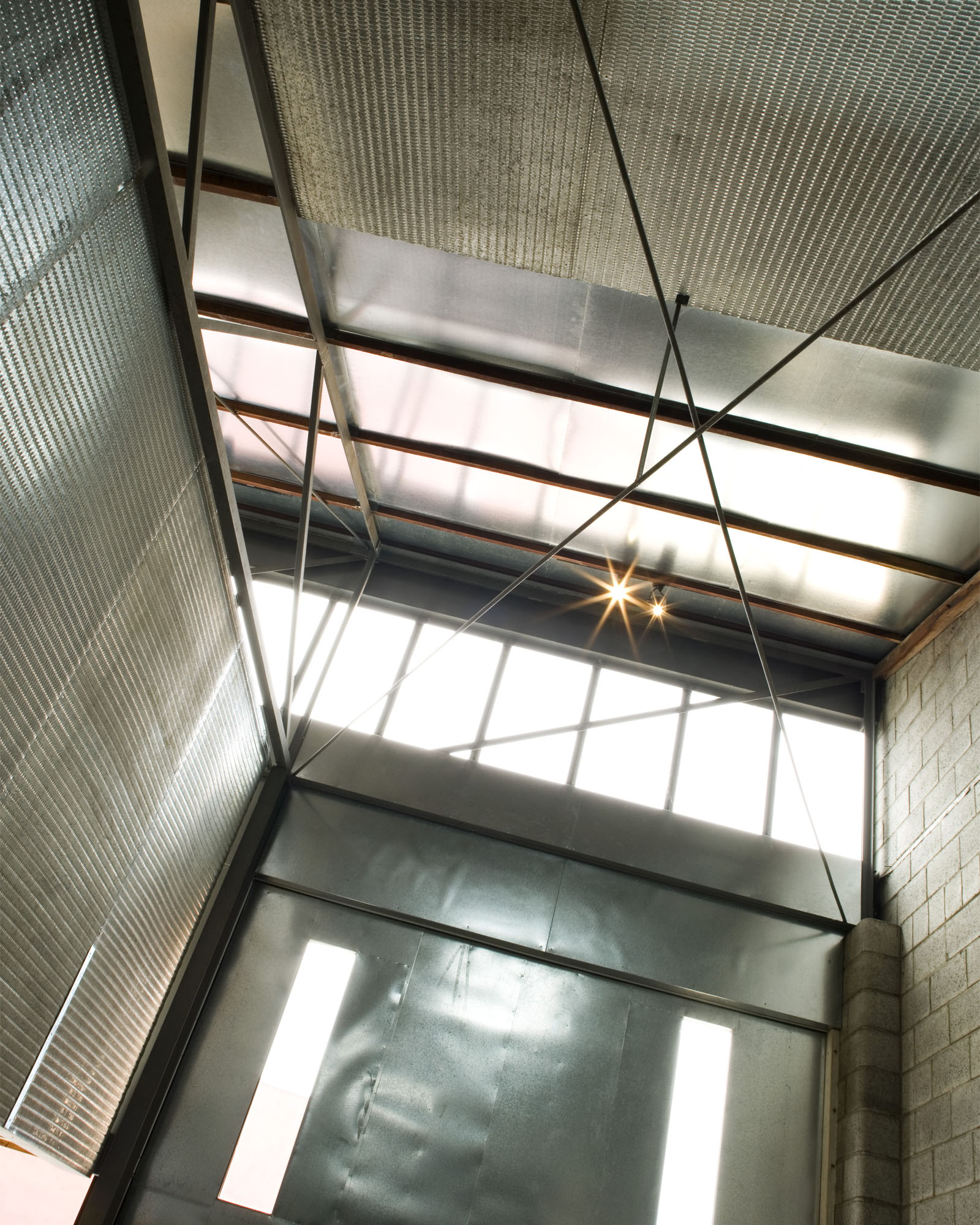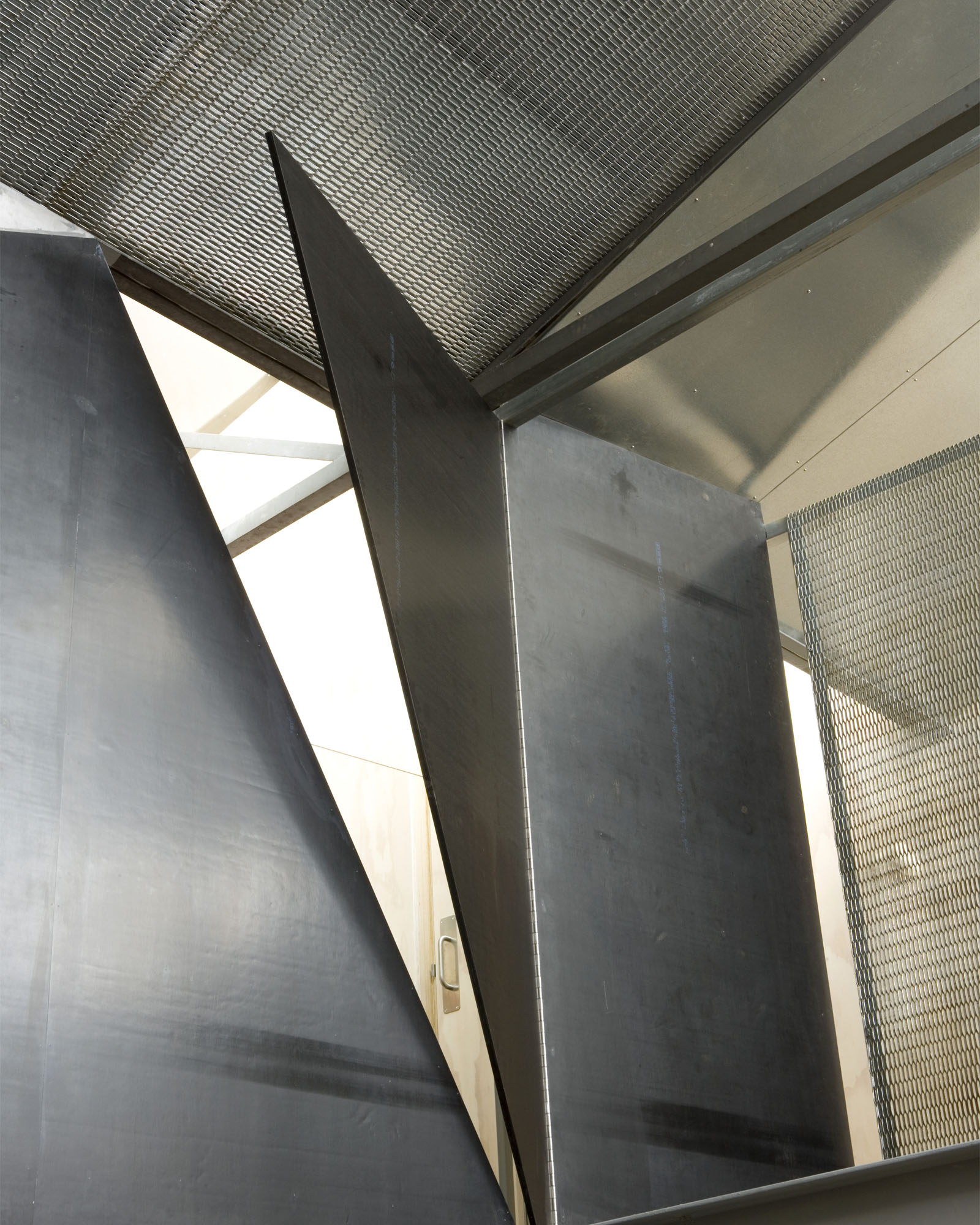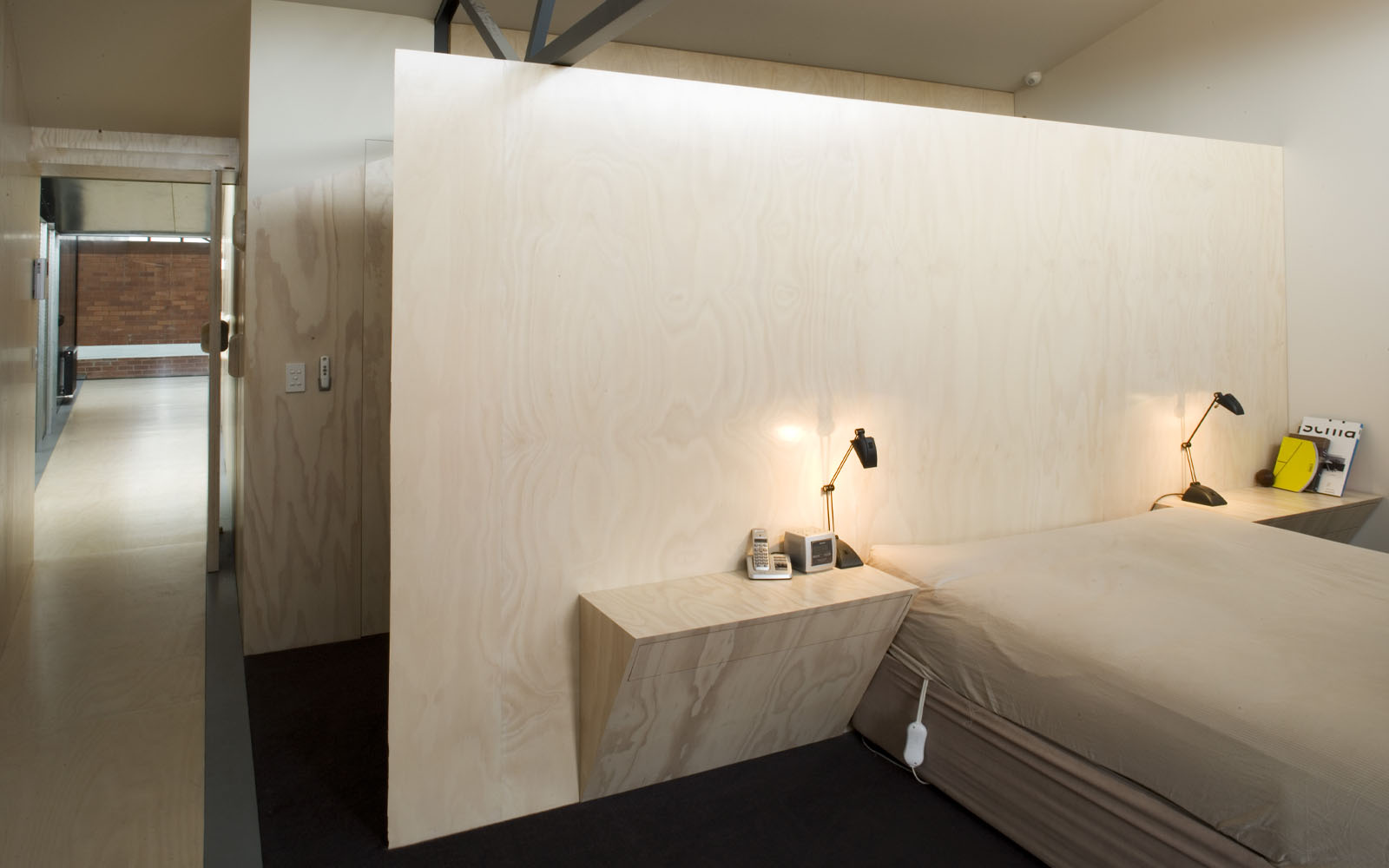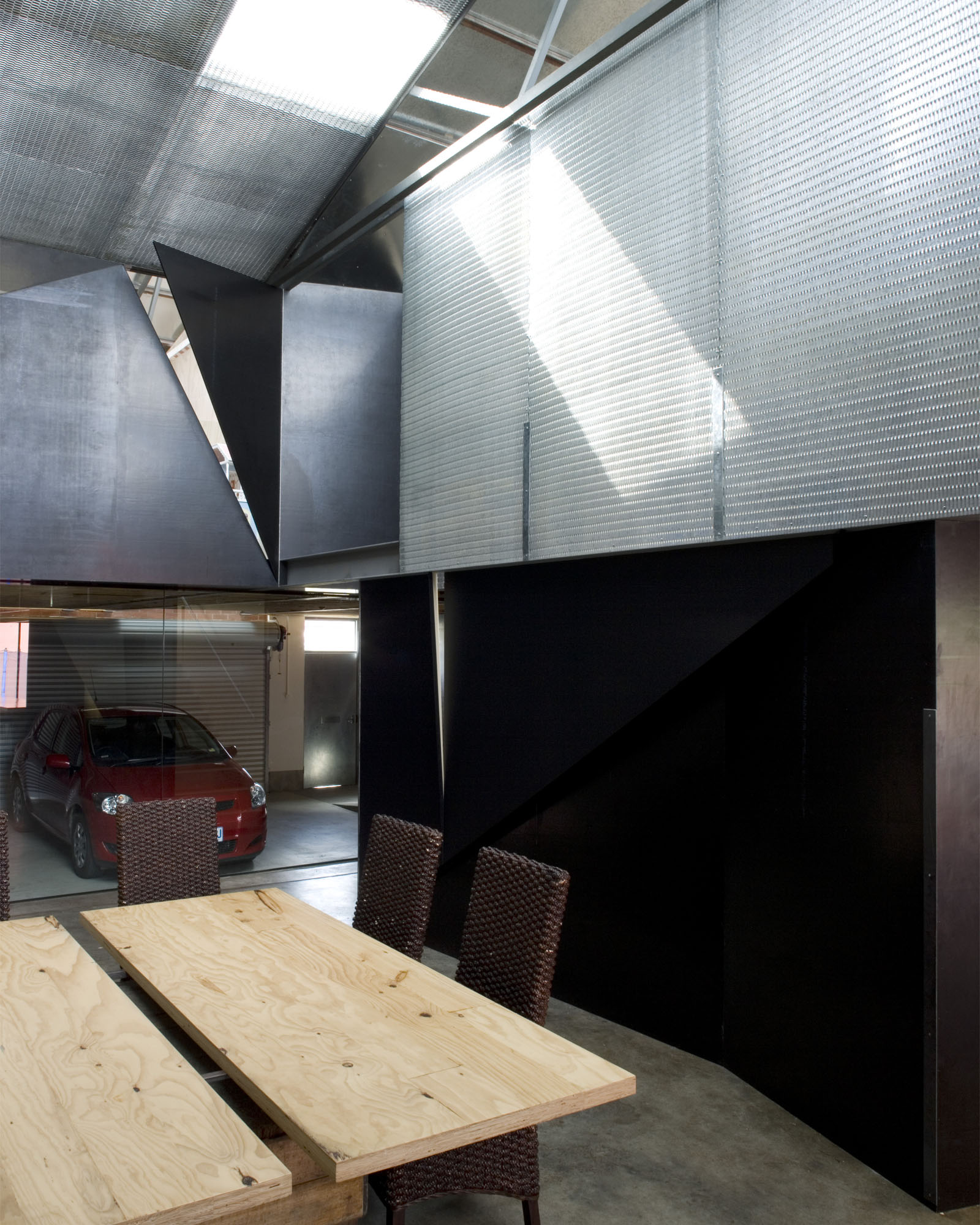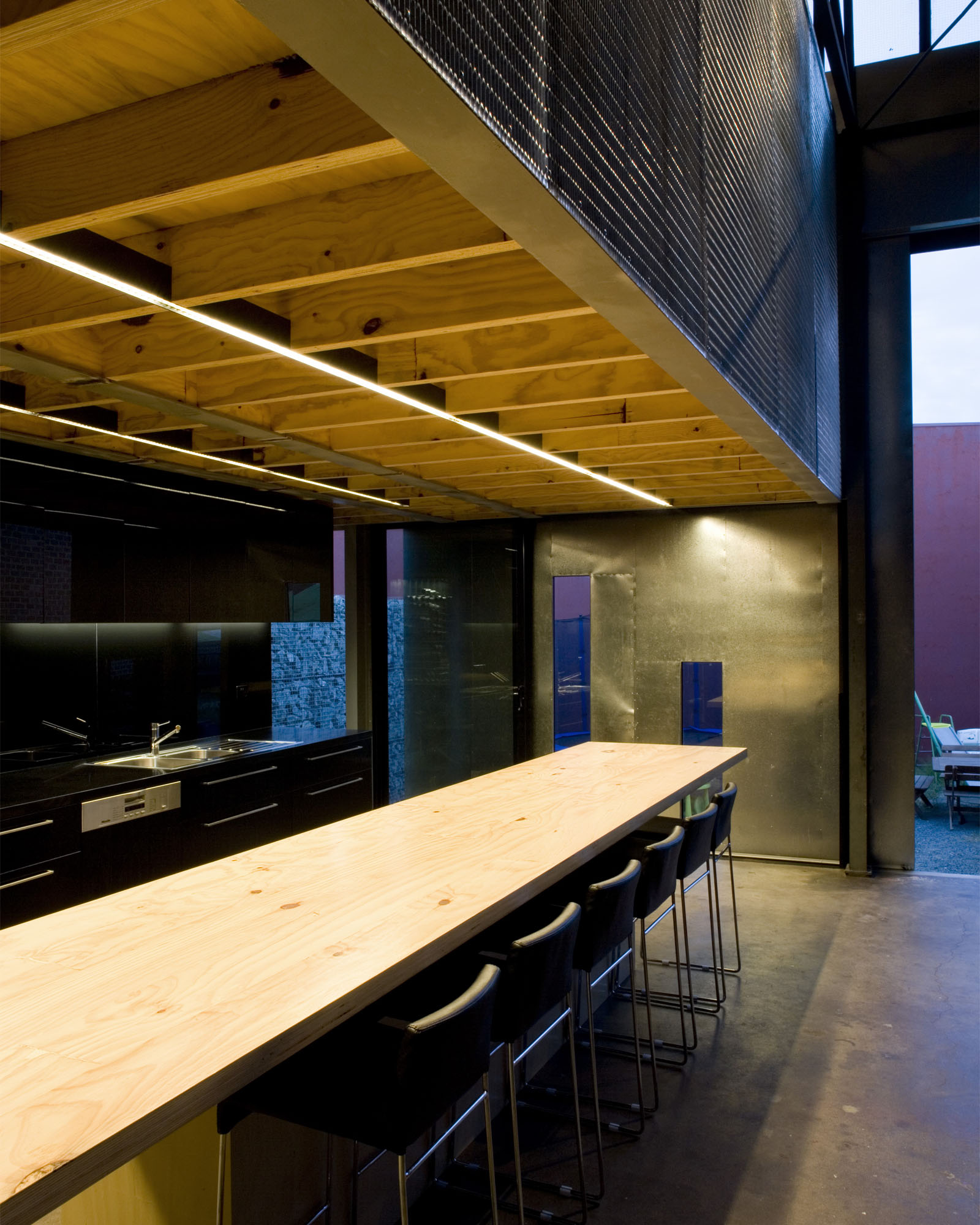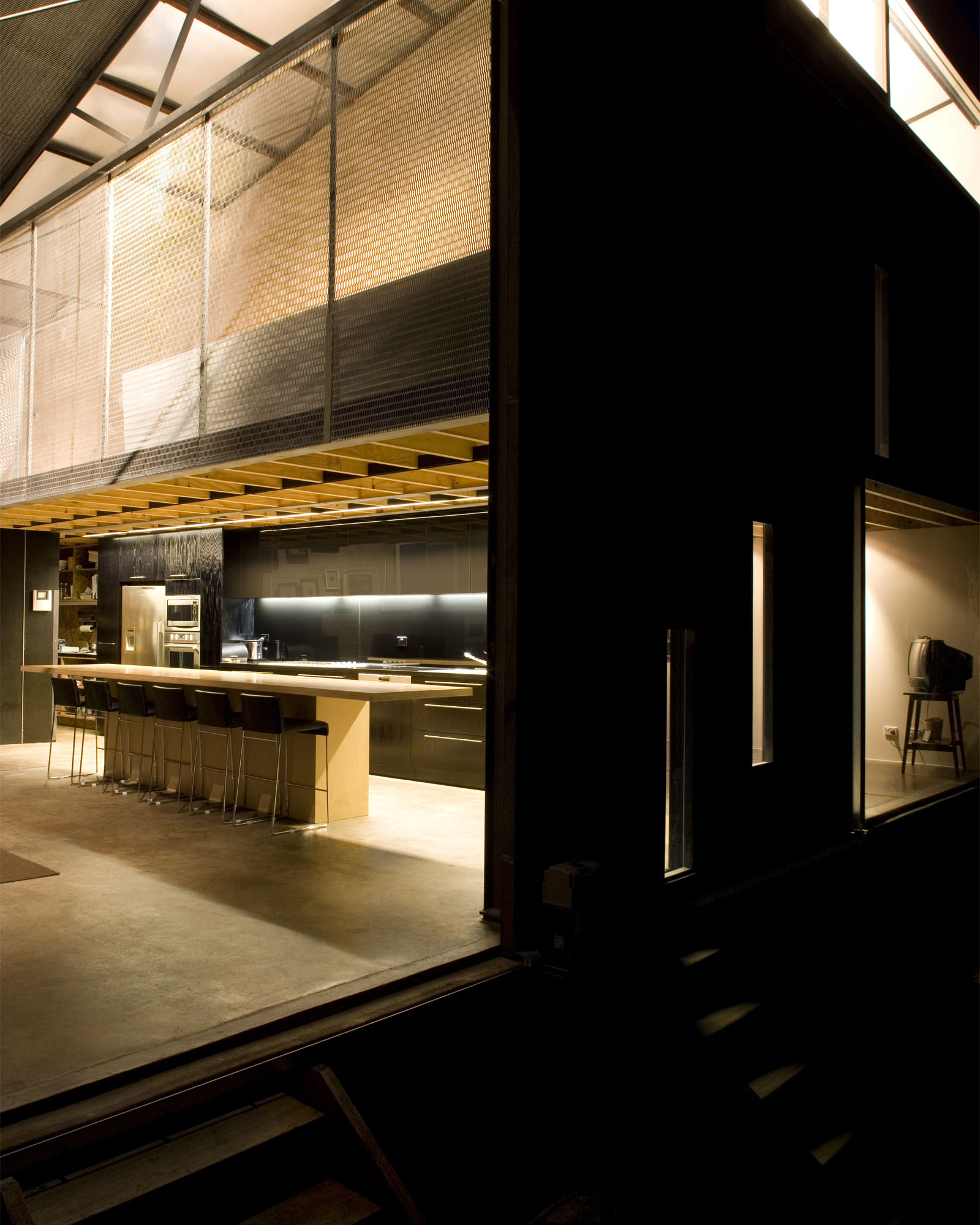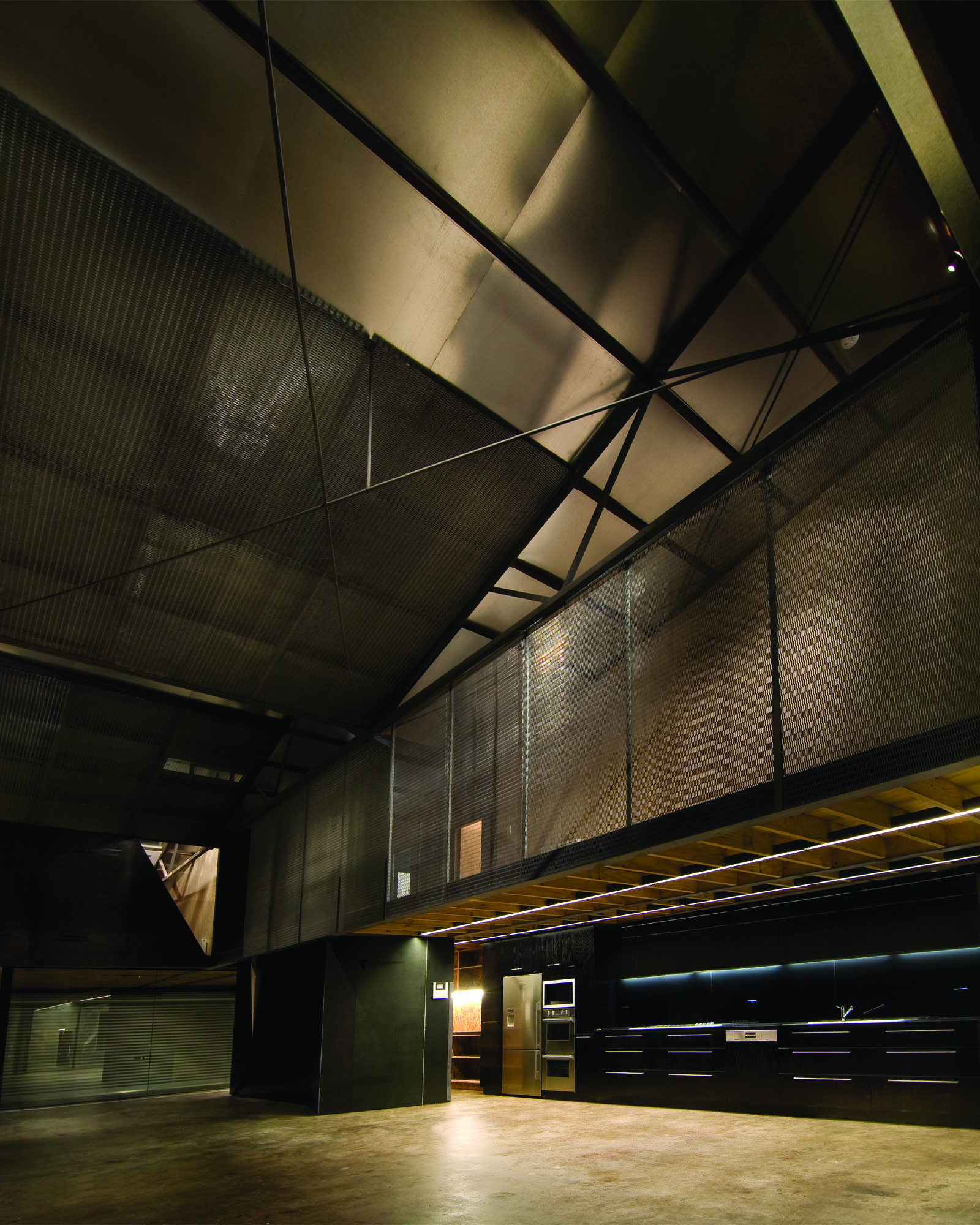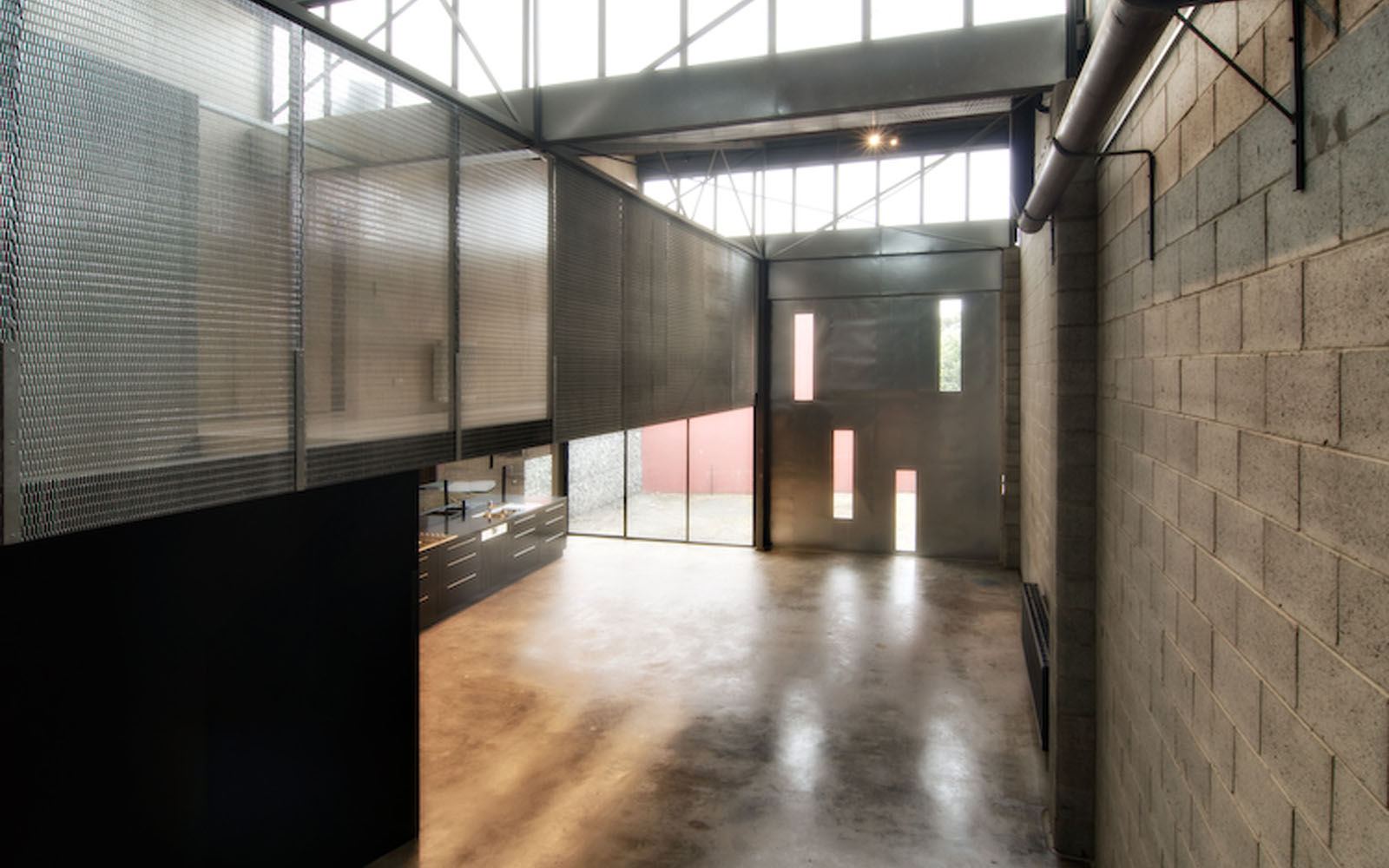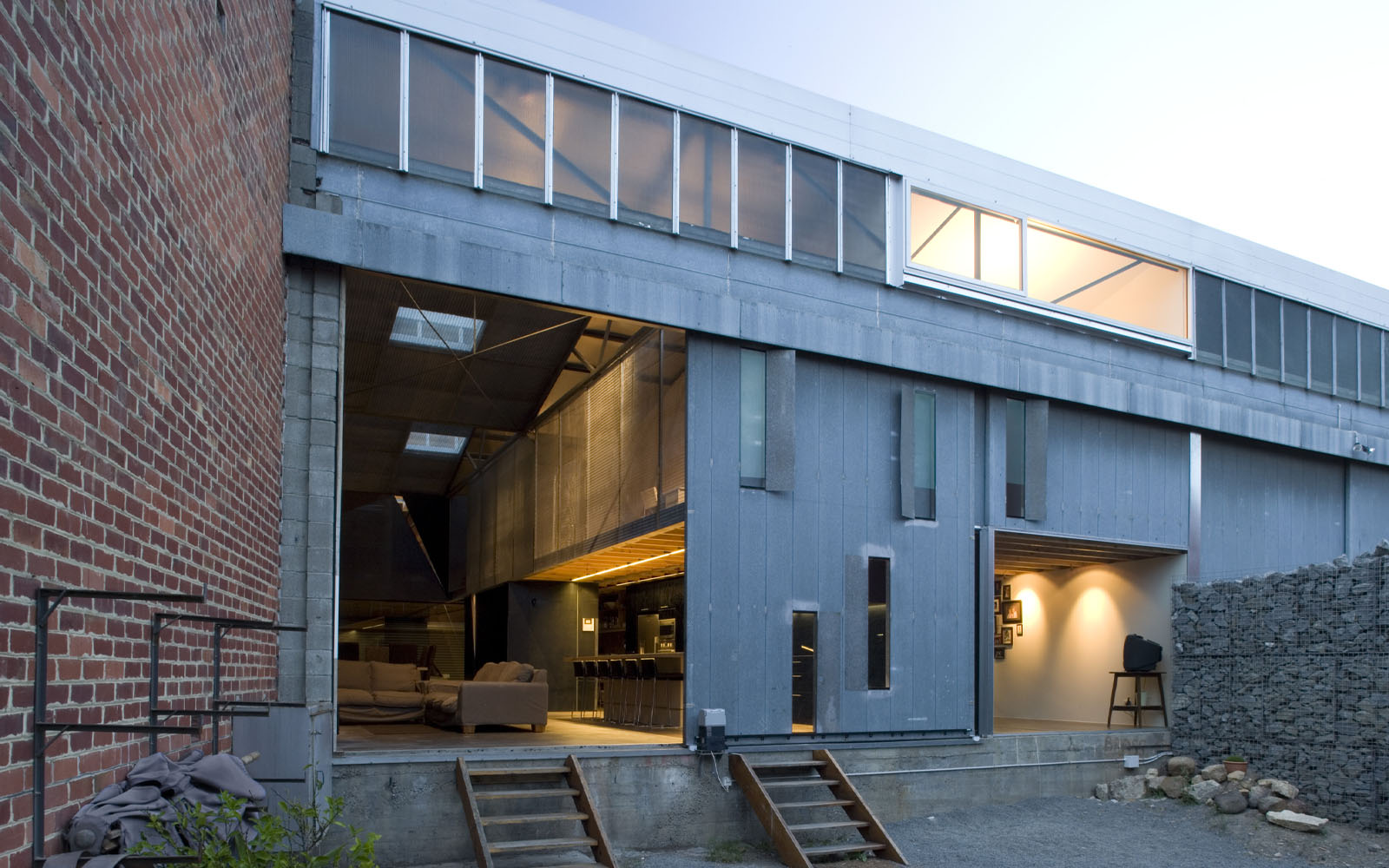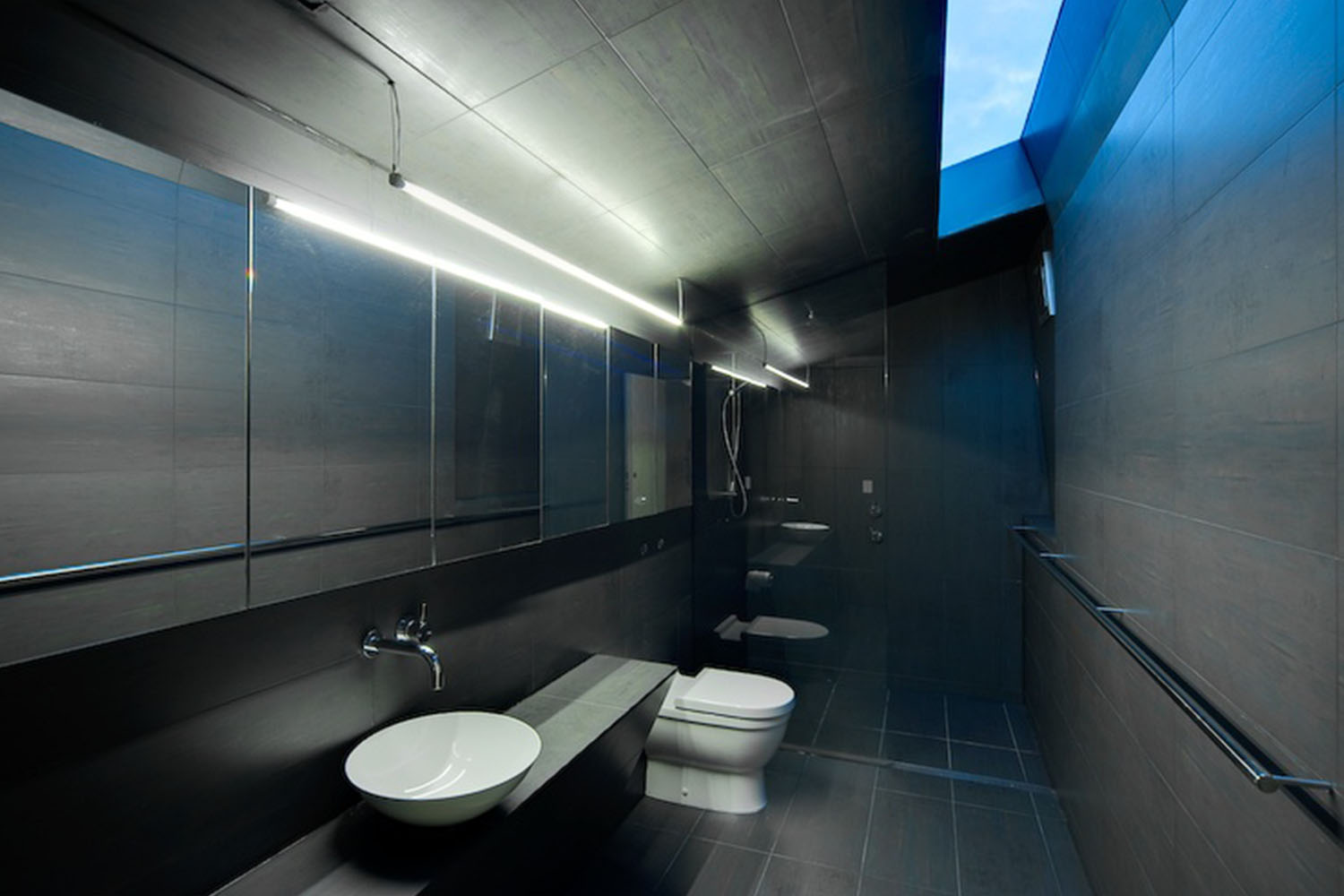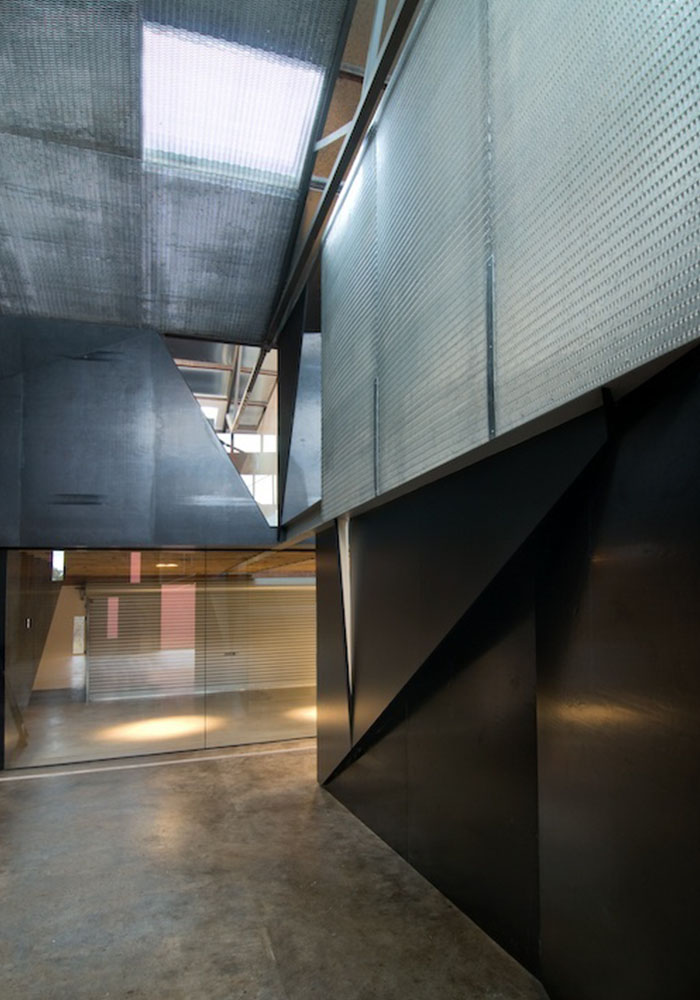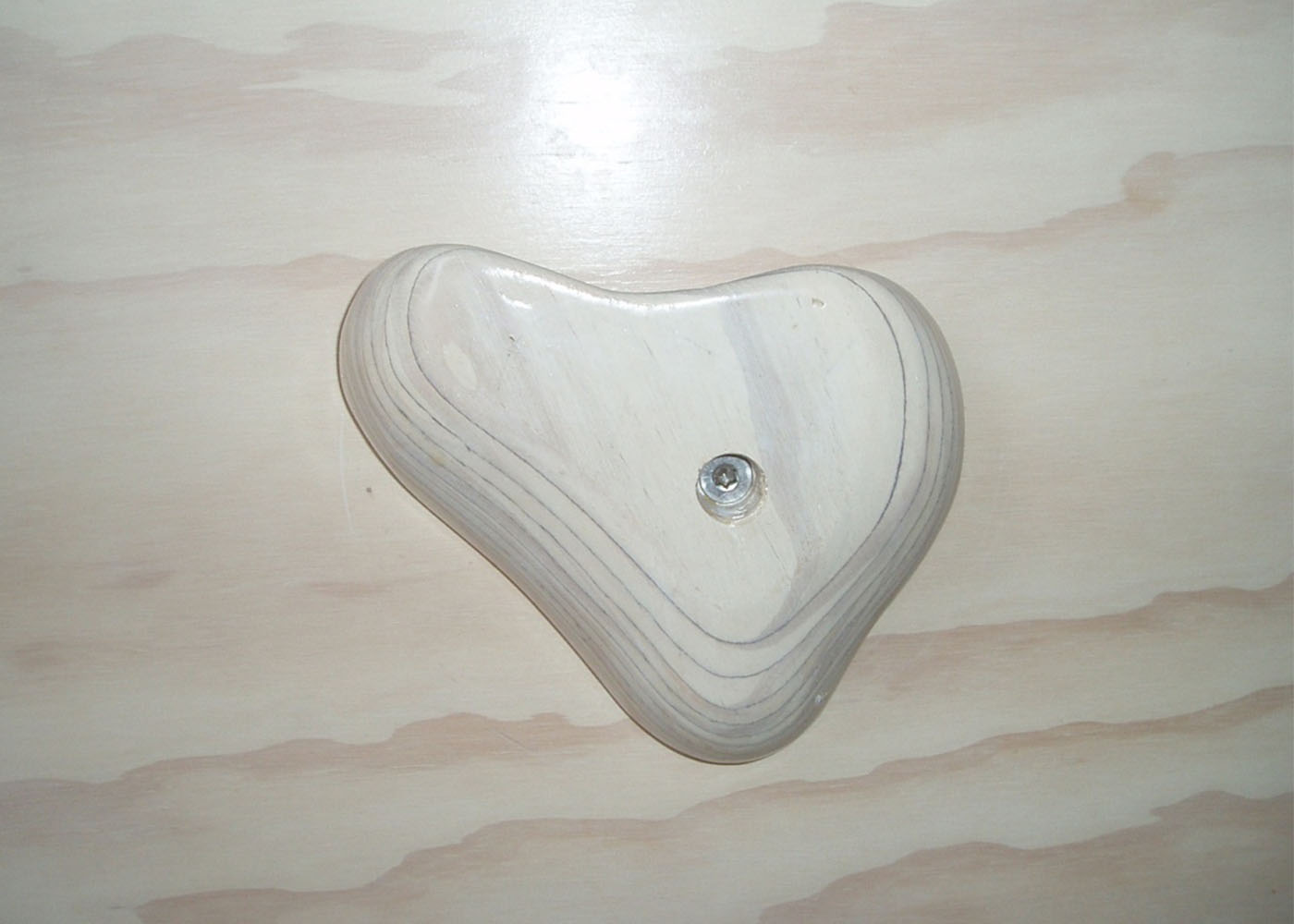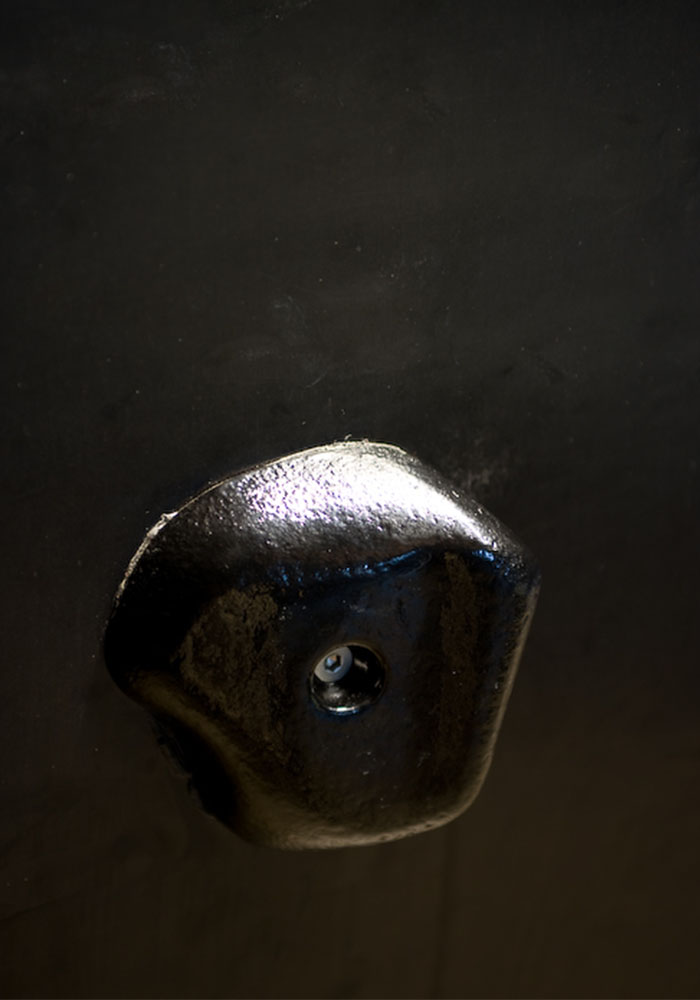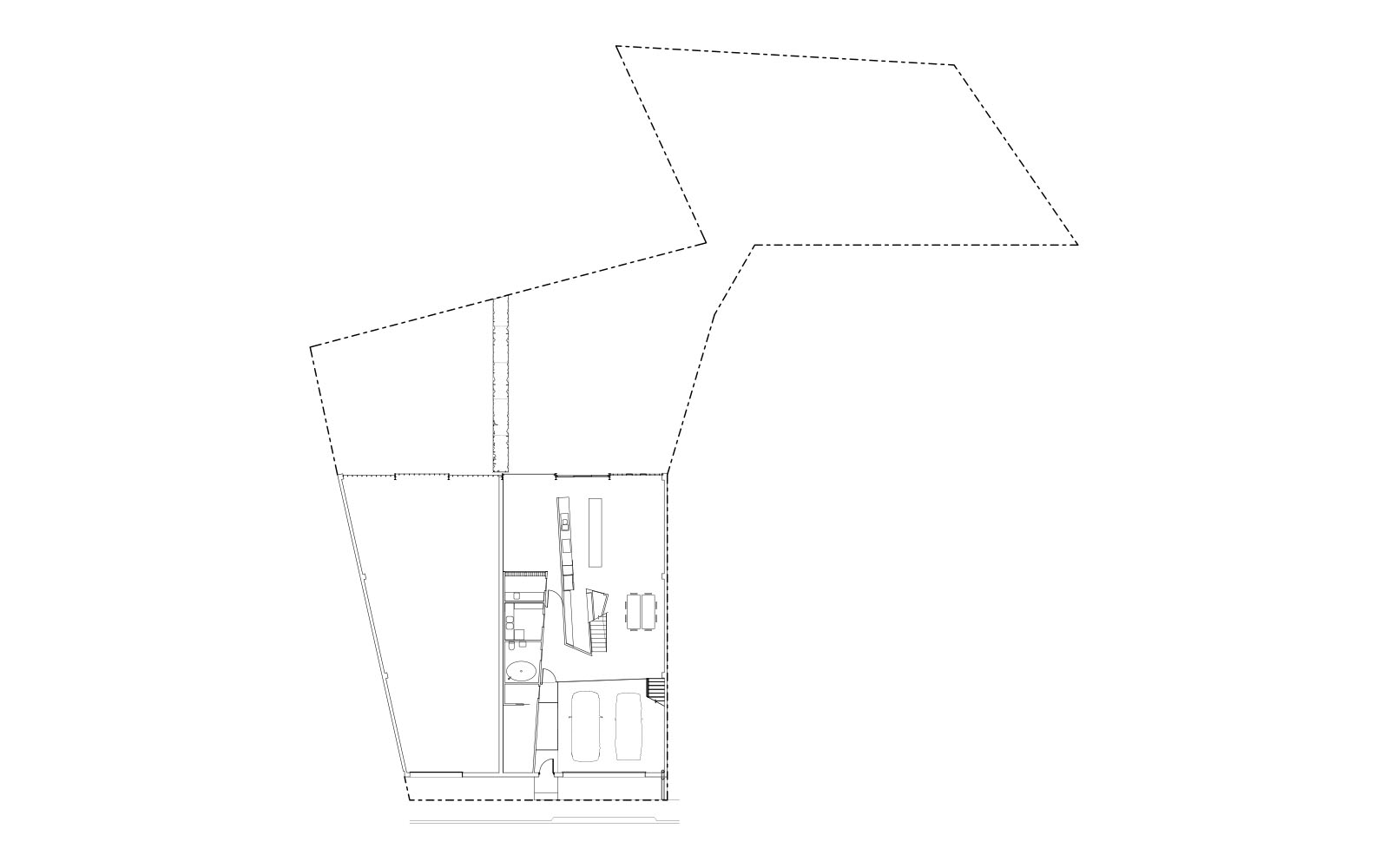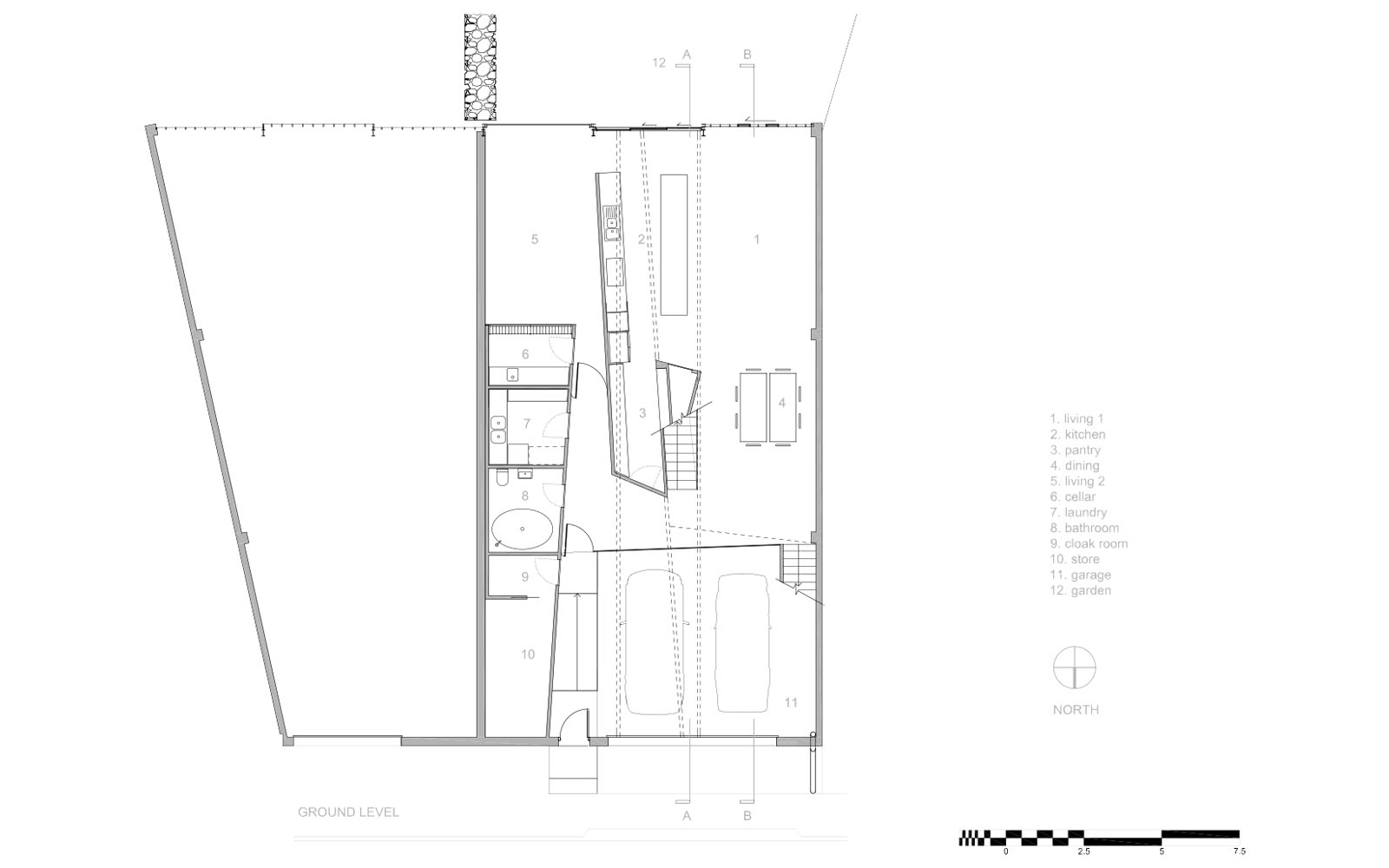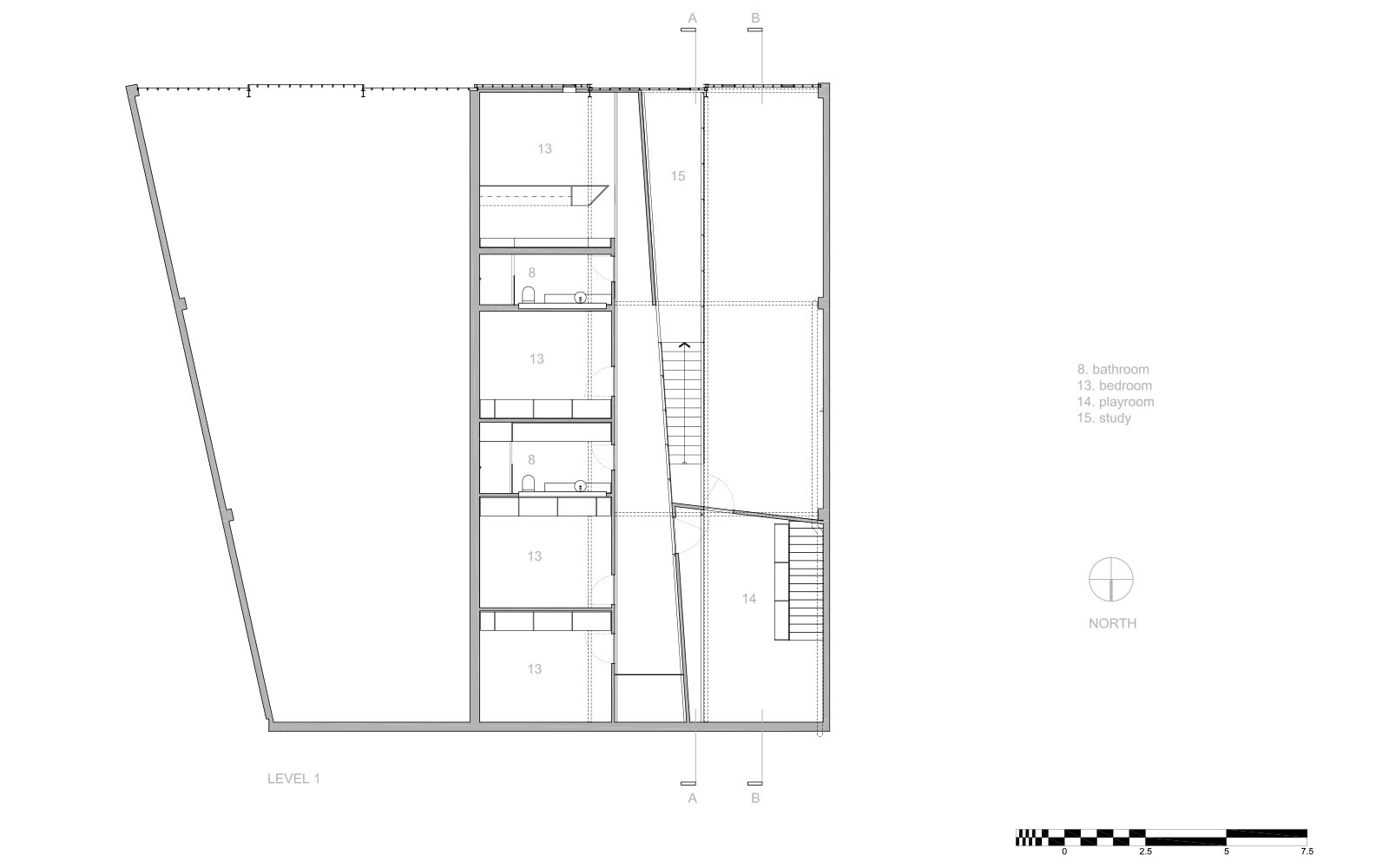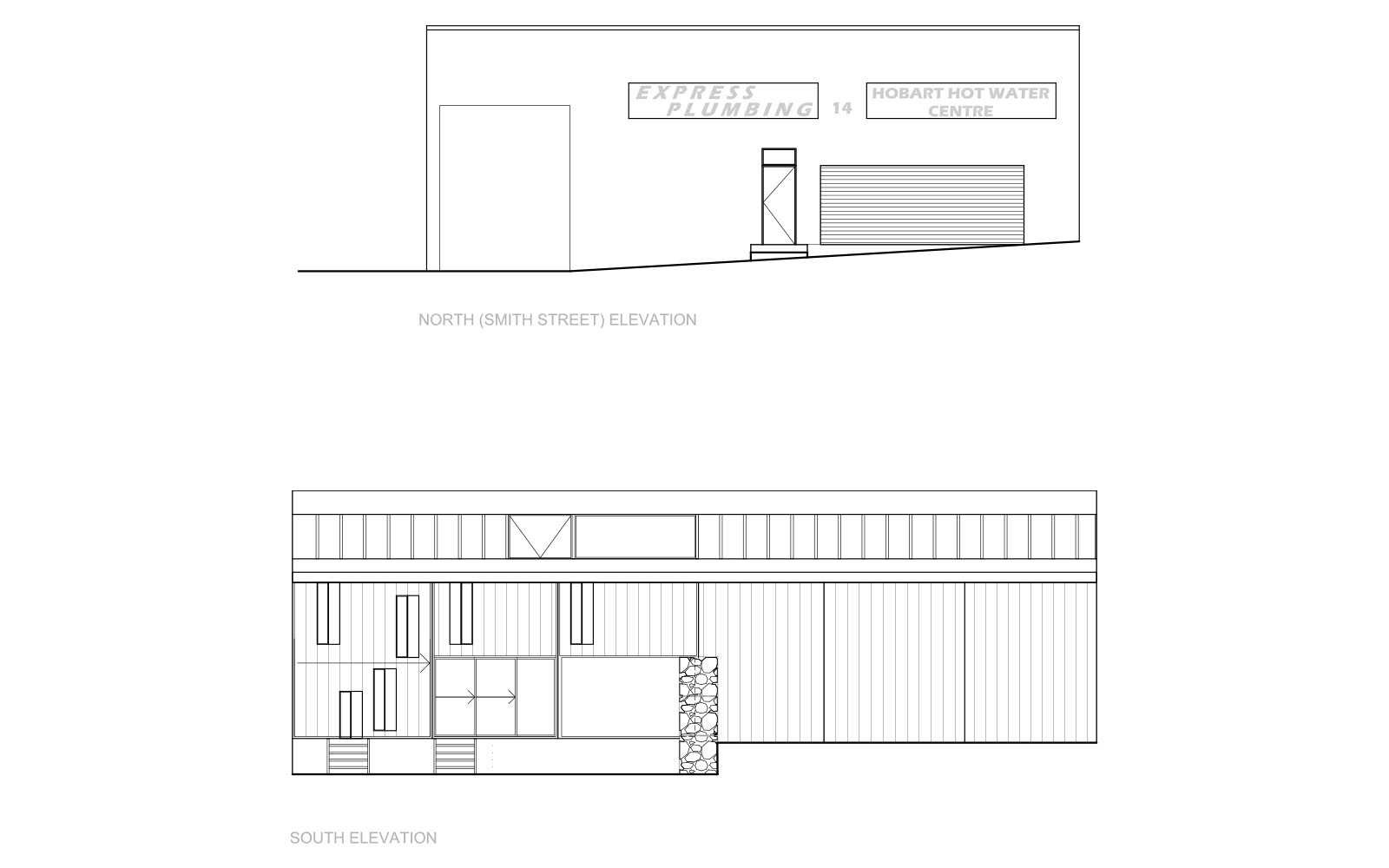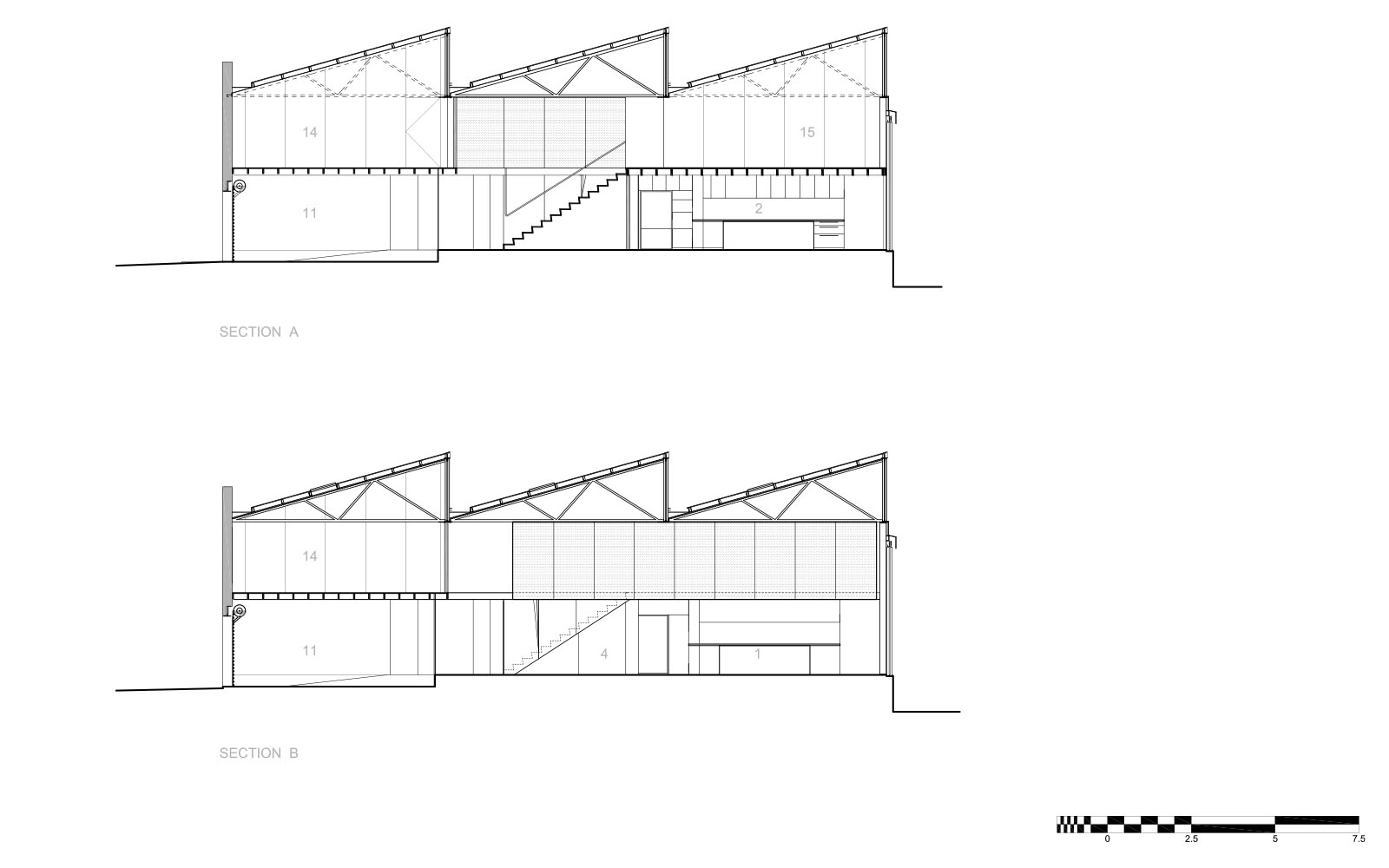-
Behind closed doors
Smith St (ware)house
The project, in an historic industrial quarter of Hobart, involved the quiet transformation of an existing industrial building into a house with minimal external changes. The 300 square metre warehouse was once used for a plumbing company. The roller door at the front was reused to open onto the parking space for the family car – separated from the living room only by a huge sheet of glass. At the rear, a private yard was concealed behind full height metal sliding doors.
A dividing wall through the existing warehouse facilitated sufficient space for two new dwellings. This configuration provided both dwellings with views from street to rear that was crucial to maintaining the depth of space in the existing building. Upper-level bedrooms ran along the dividing wall while other secondary internal walls ran parallel to the main dividing wall, each slightly angled to accommodate different dimensions required for the space to work as a residence for a young family.
The changing scale in plan was combined with a changing materiality in section. The lower levels remained as they were – concrete floors and brick walls, while the upper floor was more refined – a lime-stained timber and wall finish reflected the increased natural light from the saw-tooth windows. The internal duality is accentuated by the elevation in the original space being enhanced by sky views from within soft white plasterboard-lined bedrooms, contrasting the industrial aesthetic of galvanised metal sheet and formwork ply used throughout the open spaces.
- TYPE Housing
- LOCATION Hobart | AU
- YEAR 2008
- PHOTOGRAPHY
APPROACH
This project was an exercise in specific material and spatial interventions that work within the warehouse typology, without changing its character or quality. Despite the rawness inherent in such treatment, a playful character emerged. New steel beams that spanned the length of the interior support the new upper floor, while the underside revealed exposed floor beams with strips of continuous diffused fluorescent lighting. The metal-clad rear door was literally prised open, as with a can opener, to provide light and views to the rear yard. Expanded metal mesh throughout played with light and, in its directional weave, unexpectedly gives privacy when needed, while rock climbing grips are used as door handles.
